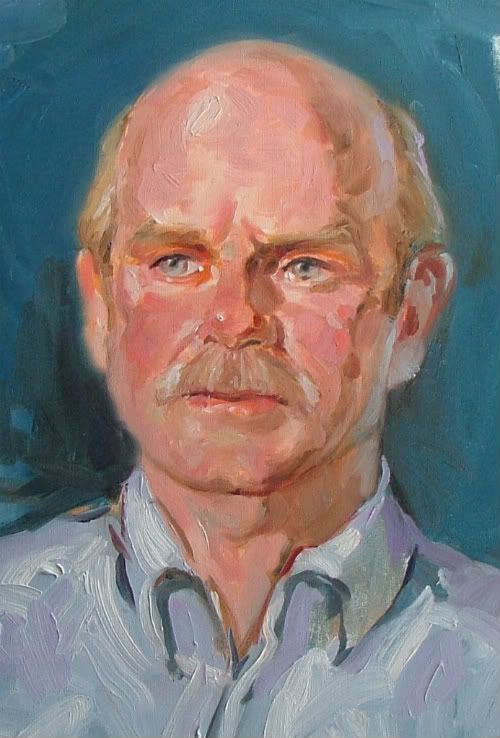
Dean of Fine Arts Robert "Bob" Jensen is heading up the Fullerton College Centennial, a massive multi-disciplinary project involving history, literature, interviews, music, art, and theater all meant to hi-light the human interest stories at the heart of the oldest community college in California. Come with us now as Robert gives us a walking tour of Fullerton College. We began our tour in the music building...
HI: What is this mural behind you?
RJ: It's a mural done by the Fullerton College mural class, taught by Manuel Gonzalez. It's called "American Masters". It's a cavalcade of American musicians of all different genres. What is really fun is, based on the reputation of our music department here, which is the largest in the state of California, we could do a mural of Fullerton College alumni musicians, if we chose to.
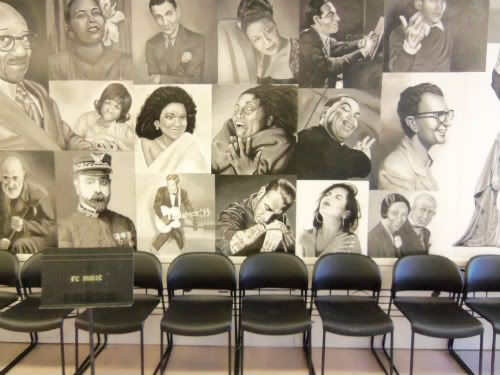
HI: I'm noticing a portrait of Mike Ness, Social Distortion frontman.
RJ: Yeah, it shows how diverse music is here, all the way back to 1913, the beginning of the college.
We step outside Bob's office in the music building...
RJ: The music and theater buildings were both built in the 1960s, and we've outgrown them pretty quickly. So our plan is to tear them down and create new facilities across the street, south of Chapman. We want to create a southern quad of music, theater, dance, and digital media. That idea is so "blue sky" it will require NASA engineering. But I'm a "blue sky" kind of a guy.
We approach the entrance to the Bronwyn Dodson Theater…
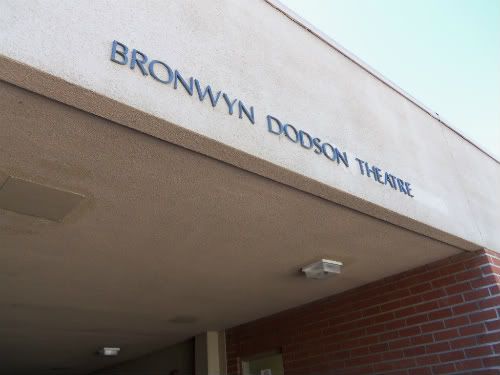
RJ: This is a black box theater named after former student Bronwyn Dodson. She died in 1991 on her way to school one day. She was one of those quintessential theater kids who was involved in everything. She studied directing, acting, lighting, sound, stage managing, and she worked at our theater festival. We decided to translate the tragedy of her death into something positive, so we wanted to name our theater after her. Right away, we were told we couldn't do that. So we wrote 800 letters, made 11 presentations, culminating in a Board of Trustees presentation, we wrote a new policy on how to name buildings after people. It was all grassroots, alumni and staff working together to say, "Let's take her story and make it emblematic of lots of different people's in the arts." Bronwyn was the kind of person who would roll up her sleeves and not say, "What do I have to do today?" but "What needs to be done?" We think we have one of the few college theaters in America named after a student. We also created a scholarship in her name, which is given to the most promising or multi-talented graduating student. We've given about $45,000 in scholarships for theater students, so that's another part of her legacy.
We continue our tour...
RJ: I'm walking to the 300 building, originally called the Commerce Building. It was the fist building on campus. It's a WPA project built in 1935. From 1913 to 1935, Fullerton College was located across the street at the high school. [Superintendent] Louis Plummer wrote a thesis at USC about building this campus, because the student population was growing so tremendously he felt it needed its own campus. So this was the first building. I love the details, the tile work, the cupolas on the roof. It has a wonderful weathervane and bell tower. As a WPA building, it hearkens back to the Depression and Roosevelt's whole idea about putting people to work.
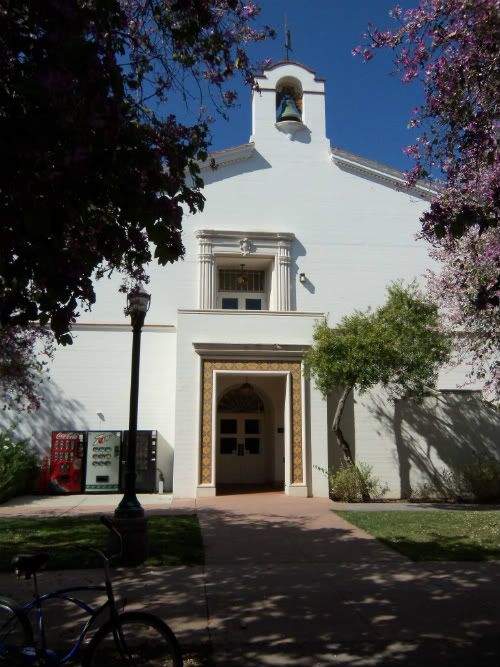
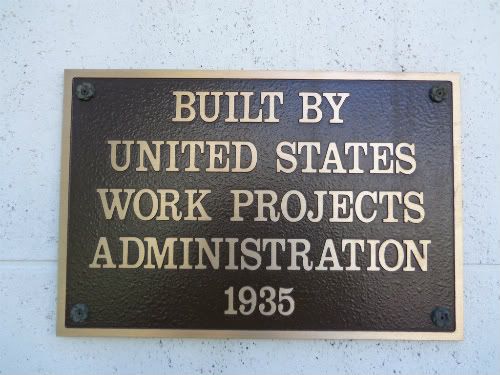
HI: What was Fullerton College like in the 1930s?
RJ: People were struggling with the Depression, coming to college, hoping to find work, seeing a growing darkness in Europe and Asia and wondering what was going to become of them.
HI: Who were some notable students who attended Fullerton College in the 1930s?
RJ: We had people like Bambino Hernandez, who was the first Latino from his community in La Habra to go to college. He came here in 1938 and became an all-state wrestler, a local celebrity. He went into the air force during World War II and flew bombers over India. A lot of servicemen who went to school in the late 30s used the GI Bill to come back to school after the war. It was an older group of students, just like how today we have veterans from Afghanistan and Iraq coming back to school.
We enter the quad…
RJ: Over here is the new library that was built in 2006, and it is spectacular. It feels like Stanford. The Magnolia trees around the quad here have grown pretty old, but we have to remember that this is where Jackson Browne wrote some his best songs, while he attended Fullerton College. You have to wonder how many romances happened here. Also, here in the quad, Jane Fonda spoke in 1968 for an anti-war protest. Around that time, some students here planned to burn American flags as part of a protest. So the football team got together with Vietnam war veterans and there was a showdown at the flagpole in the quad. There wasn't any violence. It was actually a discourse which personifies a college at its best, where two opposing ideas can live right next to each other in a tension that demands smart conversation. But the football players did make it clear that, if the protestors did burn American flags, they would put their noses in the back of their heads. At the end of the day, they agreed to disagree. I remember being on the east coast during the 1960s. It was an amazing time of people being drawn together behind an idea. Victor Hugo said, "It's not the armies, but an idea whose time has come that's the most powerful force in the world."
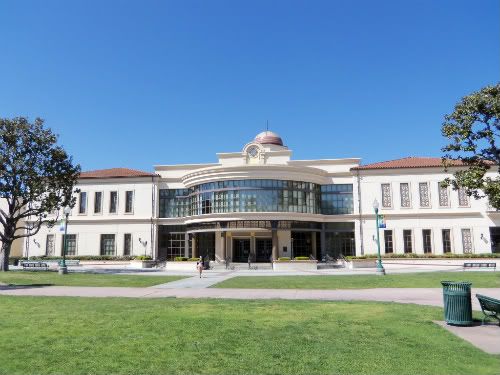
We approach the cafeteria…
RJ: Behind us right now is the president of our college, Dr. Rajen Vurdien, who is talking to some students. So, when we glance around the quad, we see the new library, the new cafeteria, this new 50 million dollar science building. When alums come back, they often go, "Wow." A number of people have asked me, "What happened to the Hornet sculpture?" because that has iconic value. One of our Centennial projects is to rebuild that with burnished copper and stained glass.
We make our way to the art building…
RJ: Part of the Centennial are a number of public art commissions. One that is currently underway is an 8 by 20 foot ceramic mural of orange crate art that represents groves that were on this city block, the plants and animals that were indigenous to the natural history of this area, and people like Leo Fender, the Chapmans, the Bastanchurys, the Yorbas who are part of the history of this place. Behind us, the artist's assistant is preparing the surface of the building for the mural. Our artist in residence, Marlo Bartels, who is doing the mural, has been painting and firing the tiles for the mural both at his studio and at our own ceramics studio. This mural is exciting because it's the first exterior mural we've done, so we're hoping it will light up some imaginations for more exterior murals.
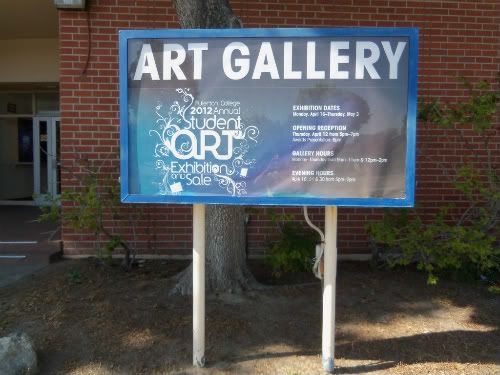
HI: Can you describe the artist-in-residence program here at Fullerton College?
RJ: The artist-in-residence program began in 1972 when artist Wayne Thiebaud joined us. Although the idea of bringing a professional artist to a college was not an original idea, it was a very new idea for southern California. In fact, people from UCLA and USC came here to see what it was all about. We invite a professional artist here for a week to give talks and demonstrations and then donate a major work to our permanent art collection, which is now valued at over 2.5 million dollars. Every year, the artist-in-residence has a show of their work at our art gallery, and every two years, we do an exhibit of our growing permanent collection. The program is about people who have a heart for students coming here to talk about their craft and their career, with the hope of helping students figure out how to navigate the strange thing called a life in the arts.
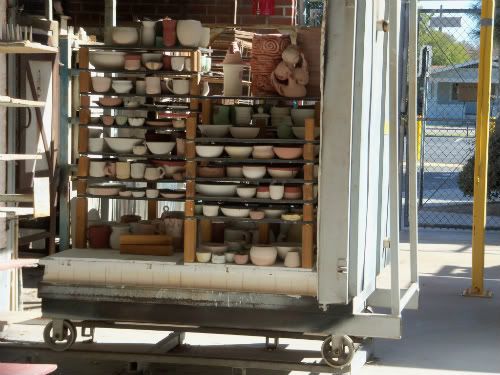
HI: I remember when you had artist Sandow Birk here. He is a personal hero of mine.
RJ: I love the series he did about the war between northern and southern California. It was provocative and fun.
HI: And he did a modern interpretation of Dante's Inferno.
We continue toward the gymnasium…
RJ: Now we're walking down what we call "Centennial Way" which right now is one of the ugliest parts of campus, because there's so much concrete. So we're hoping to do a number of arts related projects and landscaping, to make it more beautiful. One of the future projects we're working on, if you can imagine it as we walk past the gym, is to do burnished stainless steel silhouettes of athletes and sports balls and stuff, so you know it's the gym without it having to say "gym."
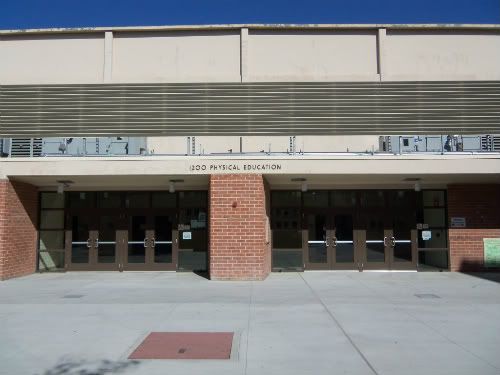
HI: I must admit that I've never been in the gym before.
RJ: If you look through the windows, you can see the "Hall of Fame" of Fullerton College athletes and coaches. For the Centenniel, we are going to start a "Hall of Fame" of distinguished non-athletes, people who have done incredible things with their lives, not just athletes.
HI: I was thinking recently about March Madness, and it's funny how lots of people know colleges for their athletic programs way more than their academic programs. You wouldn't say to your buddies, "Yeah man, Georgetown has a kick-ass medieval literature program!"
RJ: It's true, you have to dig a little deeper for that stuff. There's a great deal of entertainment and financial capital to big time college sports.
We head toward our final destination, the sociology/ethnic studies building…
RJ: Here's another relatively new building. It was dedicated in 2007, and it contains our first Centenniel mural, which was done by [Chicano artist] Gronk, our artist-in-residence last Spring. Gronk is quite a personality of the LA art scene. This is a wonderfully symmetrical building, and I call Gronk's mural an artist assault on the building. An assault in the best sense of the word, with no blood shed. An assault of ideas. I think this mural is a great choice because anyone can ask the question, "What does it mean?" And Gronk would not tell you the answer because he wants you to experience it for yourself.
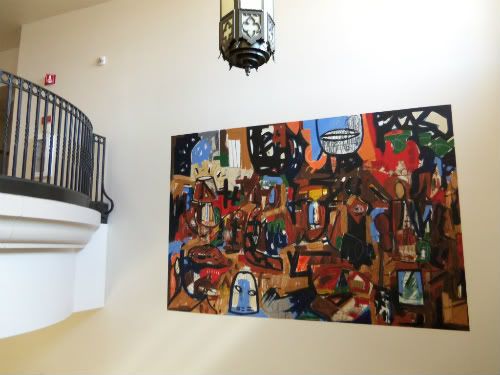
To learn more about the events, commissions, exhibits, and programs of the Fullerton College Centennial, visit www.fullertoncollegecentennial.com.
